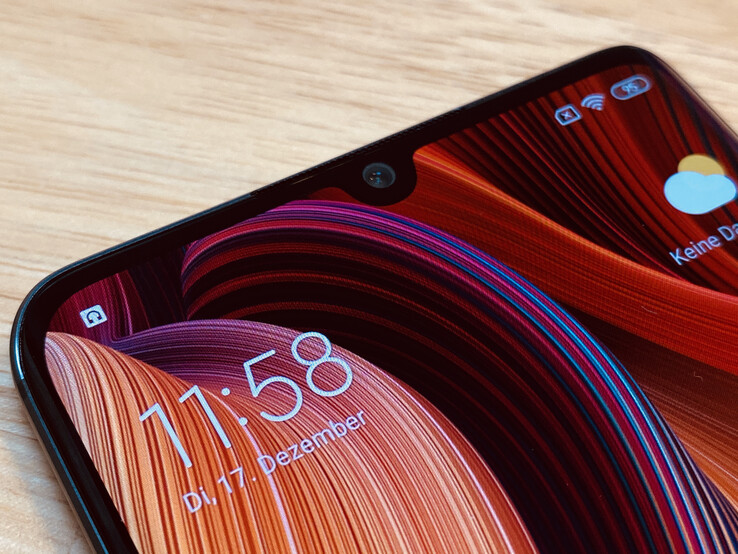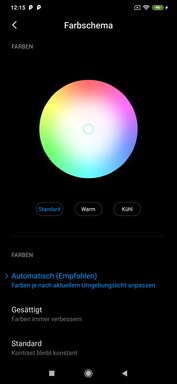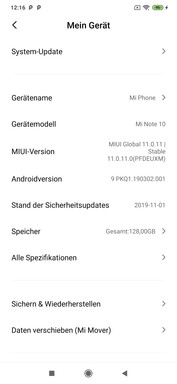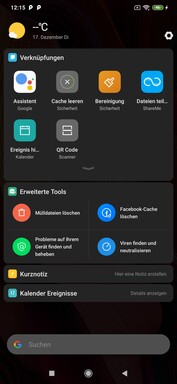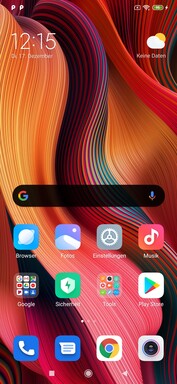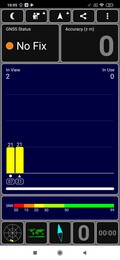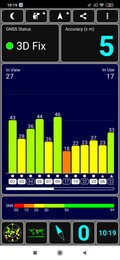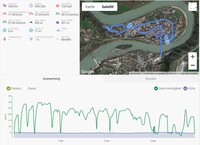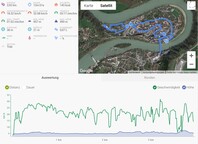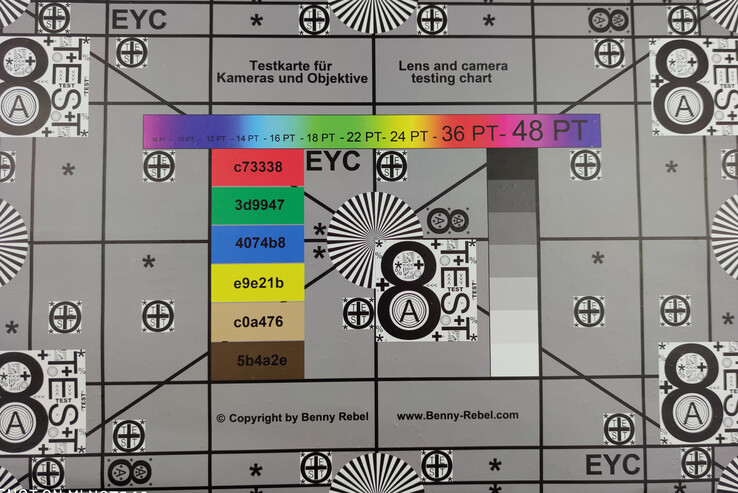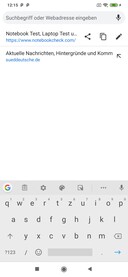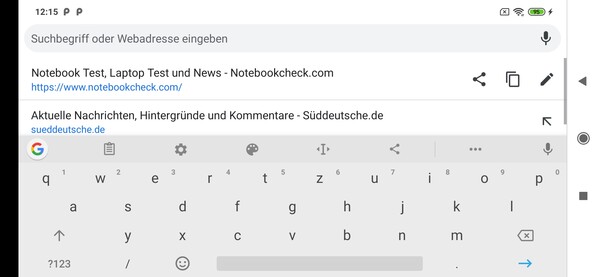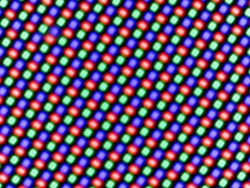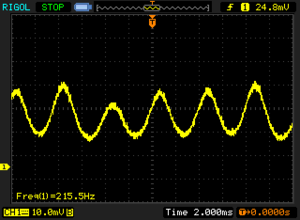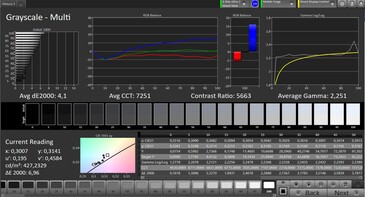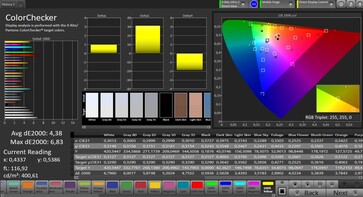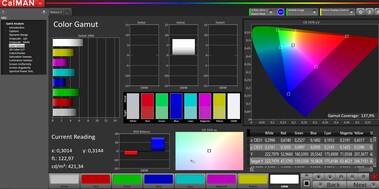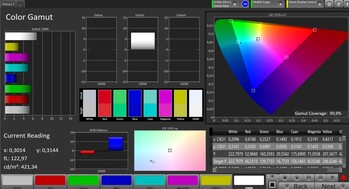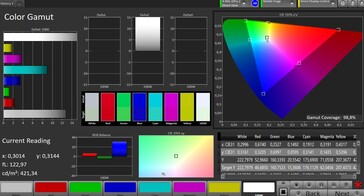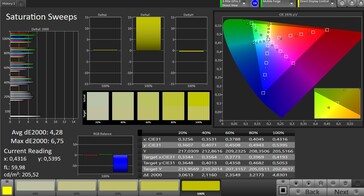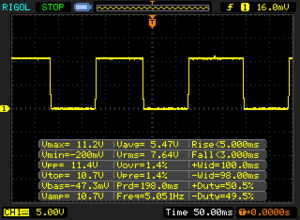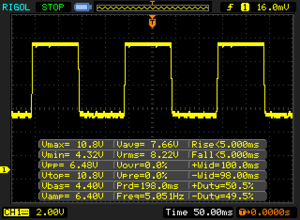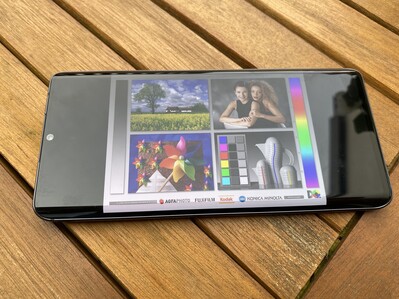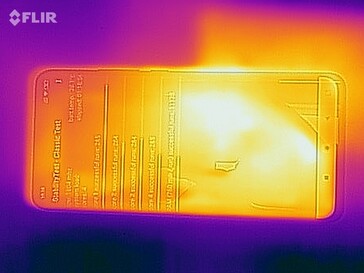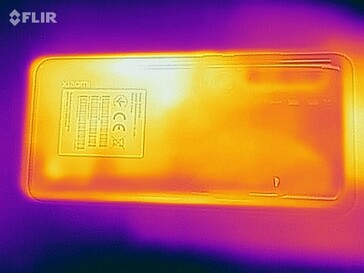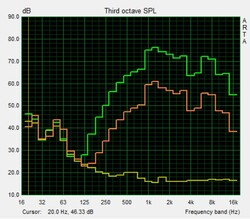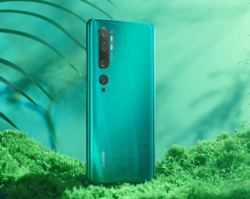Xiaomi Mi Note 10 smartphone review – Cheap camera king
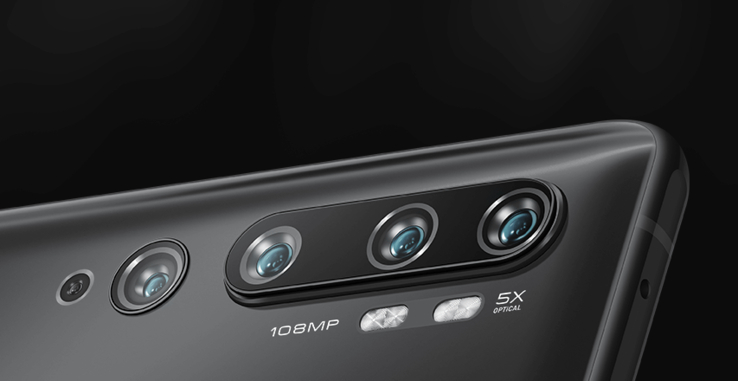
Cheap upper-class devices around 500 Euros (~$557) are currently not so easy to find: You're dealing either with older top-of-the-range smartphones or with smaller manufacturers who try to convince price-conscious buyers, who nevertheless want the performance and comfort of a high-end smartphone. This used to be a domain of OnePlus, but the manufacturer's devices have now become noticeably more expensive.
The Xiaomi Mi Note 10, also known in China as the Mi CC9, could fill this gap: On one hand, it offers a camera system with five lenses on the back, an extremely high-resolution main camera and a huge battery. The performance should also convince thanks to the Snapdragon 730. Whether the Mi Note 10 is a real competitor for high-end smartphones and how it performs in its price range, we'll clarify in this review.
Comparison devices
Rating | Version | Date | Model | Weight | Drive | Size | Resolution | Price |
|---|---|---|---|---|---|---|---|---|
| 83.3 % v7 (old) | v7 (old) | 12 / 2019 | Xiaomi Mi Note 10 SD 730G, Adreno 618 | 208 g | 128 GB UFS 2.0 Flash | 6.47" | 2340x1080 | |
| 89.4 % v6 (old) | v6 (old) | 08 / 2019 | Honor 20 Kirin 980, Mali-G76 MP10 | 174 g | 128 GB UFS 2.1 Flash | 6.26" | 2340x1080 | |
| 86 % v7 (old) | v7 (old) | 07 / 2019 | Asus ZenFone 6 ZS630KL SD 855, Adreno 640 | 190 g | 128 GB UFS 2.1 Flash | 6.40" | 2340x1080 | |
| 80.6 % v7 (old) | v7 (old) | 05 / 2019 | Google Pixel 3a XL SD 670, Adreno 616 | 167 g | 64 GB eMMC Flash | 6.00" | 2160x1080 | |
| 84.2 % v6 (old) | v6 (old) | 04 / 2019 | Sony Xperia 10 Plus SD 636, Adreno 509 | 180 g | 64 GB eMMC Flash | 6.50" | 2520x1080 |
Case
White, black or green are the color options that await the buyer with the Mi Note 10. However, our black test device has a rather gray color scheme. Common to all the color variants of the Mi Note 10 is the glossy back, which also captures the ambient light slightly and therefore creates color effects. This looks very fancy. Furthermore, the case sits very well in the hand thanks to its rounded corners; it's also very high-quality due to the metal frame and the clearly curved glass at the edges.
The screen at the front comes with a small waterdrop notch; the black bezel around the screen is narrow but visible. Exerting pressure on the case or twisting it has no effect on it, and it's generally very stable. There is no IP certification, so you should be careful with the Mi Note 10 when close to water.
208 grams is an ample weight for a smartphone, but it's also probably a little too big for small hands.
Connectivity
The Mi Note 10 is only available to us in one configuration: 128 GB of storage and 6 GB of RAM. However, there's also the Mi Note 10 Pro, which comes with a storage combination of 256 GB/8 GB. Although USB-C is available, it only supports USB 2.0 speeds. There is no notification LED, but the edges of the screen light up when a notification is present.
There are two SIM slots, but there's no microSD slot. In return, there's a 3.5 mm audio jack, which will surely make fans of analog headphone jacks happy.
The Xiaomi Mi Note 10 is one of the few devices that still has an infrared blaster.
Software
MIUI 11 is installed as the latest version of Xiaomi's software interface. However, the Mi Note 10 is still based on Android 9, although an update to Android 10 has been promised. The security patches date from November 1, 2019 and are therefore up-to-date at the time of conducting this review.
Some advertising apps and games are preinstalled, but they can be completely deleted if you don't want them. DRM L1 is on board, so you can enjoy streaming content in HD resolution.
Communication and GPS
The Mi Note 10 only comes with 802.11ac Wi-Fi, so the fastest current standard, Wi-Fi 6, is missing. In our test with the Linksys Nighthawk AX12 reference router, the smartphone reaches a medium speed within the comparison field. The Google Pixel 3a XL and the Asus ZenFone 6 can access the Internet much faster.
With its download speed of 800 Mb/s, the LTE modem is quite fast compared to similarly expensive smartphones; the Google Pixel 3a XL, for example, only manages a maximum of 600 Mb/s. In the urban environment, LTE was also readily available in buildings; outdoors, the reception was usually full.
| Networking | |
| iperf3 transmit AX12 | |
| Google Pixel 3a XL | |
| Asus ZenFone 6 ZS630KL | |
| Xiaomi Mi Note 10 | |
| Honor 20 | |
| Sony Xperia 10 Plus | |
| iperf3 receive AX12 | |
| Google Pixel 3a XL | |
| Asus ZenFone 6 ZS630KL | |
| Xiaomi Mi Note 10 | |
| Sony Xperia 10 Plus | |
| Honor 20 | |
Indoors, the smartphone can't determine our location; it takes a bit of time outdoors, but after that, the location is relatively accurate at five meters. In Google Maps, the location works with precision down to a few meters, and the compass shows the correct viewing direction.
Naturally, we also went on a bike tour with the Xiaomi Mi Note 10 and took the Garmin Edge 520 professional navigator with us. In direct comparison, the Xiaomi phone doesn't need to hide here. As with the Garmin navigator, there are some small deviations from the driven path and some abbreviated corners, but overall, the smartphone does a good job in terms of location, and you can definitely recommend it for navigating.
Telephone and call quality
Xiaomi uses Google's phone app, which is quite intuitive to use, but puts the keypad a little in the background, which is a matter of taste. We find it quite logical when it comes to stored contacts. Calling via Wi-Fi can be activated in the options when the SIM card is inserted, and LTE calls should work automatically if the network operator supports it. Otherwise, our XDA Developers colleagues have put together a guide that explains how you can bypass the carrier check.
On request, the earpiece in the Mi Note 10 can be quite loud, which helps in noisy surroundings, but it also leads to the environment being able to listen in on the conversation. Noise in the background is clearly noticeable at high volume. Our voice is transmitted quite well, whether we speak loudly or quietly. You can hear the other person clearly via speaker, but the voice isn't so present. Our voice is transmitted well again, and the microphone hardly distorts.
Cameras
A triple-camera setup at the back isn't enough for you? Do 48 megapixels only make you laugh? Then the Xiaomi Mi Note 10 is perhaps actually a good option for you: There are a whopping five lenses on the back and none of them is a purely auxiliary lens for the calculation of depth of field. There's also a main camera with 108 megapixels, i.e., a resolution of 12,032x9,024 pixels. The camera can also optionally take photos in this resolution, but by default, it always combines four pixels into one, which still means a fairly decent resolution of 27 megapixels. An optical image stabilizer for the main lens is on board, as is a flash that, similar to Apple, adjusts the flash light to the situation using four different colored LEDs.
The main camera tends to display a rather strong blur in the background of objects, so the photos should probably get closer to the optics of an SLR or camera system. However, the direct comparison to the Olympus camera system shows that the Xiaomi smartphone exaggerates the effect a bit. The sharpness in the focus area is, on the other hand, really good and many details are shown. Overall, the image looks cooler than, for example, the images from the iPhone 11 Pro Max.
Environment images seem very successful in terms of color, and the variety of detail when zooming in is actually impressive. Dynamic range is also pleasing. In low-light situations, however, other smartphones have a clear advantage; the Xiaomi Mi Note 10 offers slightly less dynamic range and significantly less sharpness here.
Videos can be recorded in 4K quality at 30 fps. You have to choose a lens before shooting. While recording, only digital zoom is available, which produces quite good results with the main lens thanks to the high resolution. Changes in exposure could still be a little more stepless, but we like the image quality of the main lens very much. In addition, there's also a slow motion function with up to 960 images in 720p resolution.
Four more lenses on the back allow wide-angle shots and a 5x optical zoom, which also works steplessly. The pictures are quite decent. Furthermore, the telephoto lens with the smallest focal length even comes with an image stabilizer so that the images don't turn out blurred. In addition, there's a macro lens in case you want to approach something very closely.
In the test laboratory, we're once again able to examine the main camera in fixed lighting situations. What the camera manages to capture from the test chart under only 1 lux of illuminance is fairly decent; the sharpness is even quite good at high contrast. With perfect lighting, the chart looks very sharp, and details are also very well reproduced.
Overall, the camera setup of the Xiaomi Mi Note 10 is definitely a cause for enthusiasm. However, we like the image quality better with environment images than with objects since the blur effect is somewhat exaggerated here. Even for very dark environments, the smartphone is the first choice. Otherwise, however, the level of detail and sharpness is often impressive and creates tough competition for high-end devices that cost twice the price.
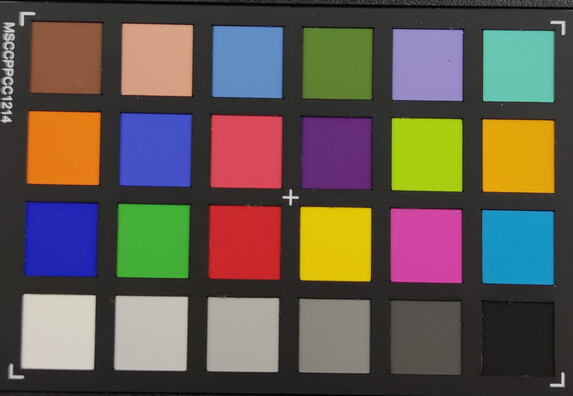
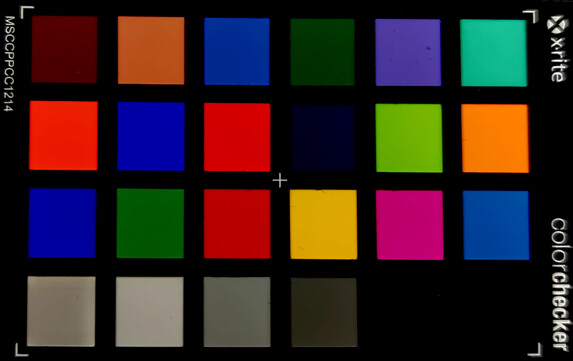
Accessories and warranty
The Xiaomi Mi Note 10 includes both a fast charger and a silicon case. Xiaomi doesn't offer any special accessories at the moment.
Currently, the warranty only covers 12 months. However, when buying through an EU dealer, there's still the 24-month dealer warranty.
Input devices and handling
The fingerprint scanner is located under the screen and is placed in such a way that you usually meet it intuitively even without looking. According to Xiaomi's own statements, it has used a new technology for the sensor, which is supposed to deliver better results and should be faster in some situations. The detection rate is not yet as perfect as with a dedicated sensor, and the speed is also minimally slower, but you can make use of the sensor well overall. Facial recognition can also be used for unlocking.
The touchscreen reacts to subtle movements, even in the edge area, and it's very precise. The physical buttons look neither cheap nor particularly high-quality.
Display
Many smartphones in this price range rely on an IPS screen, but the Mi Note 10 comes with an AMOLED screen that is at class level with its extended Full HD resolution. The maximum brightness sets standards in this price region, and the screen's HDR support hasn't been a given for a long time when investing 500 Euros (~$557) in a smartphone.
With the OLED display, of course, you have to put up with it using PWM to reduce brightness, which could lead to flickering for sensitive users. Therefore, you should try the smartphone out before you buy it if you have problems here. The screen's response time is fast, so gamers should be satisfied with it too.
| |||||||||||||||||||||||||
Brightness Distribution: 89 %
Center on Battery: 625 cd/m²
Contrast: ∞:1 (Black: 0 cd/m²)
ΔE ColorChecker Calman: 4.38 | ∀{0.5-29.43 Ø4.78}
ΔE Greyscale Calman: 4.1 | ∀{0.09-98 Ø5}
137.9% sRGB (Calman 2D)
Gamma: 2.251
CCT: 7251 K
| Xiaomi Mi Note 10 AMOLED, 2340x1080, 6.5" | Honor 20 IPS, 2340x1080, 6.3" | Asus ZenFone 6 ZS630KL IPS, 2340x1080, 6.4" | Google Pixel 3a XL OLED, 2160x1080, 6" | Sony Xperia 10 Plus IPS, 2520x1080, 6.5" | |
|---|---|---|---|---|---|
| Screen | 29% | -4% | 23% | -30% | |
| Brightness middle (cd/m²) | 625 | 481 -23% | 569 -9% | 409 -35% | 572 -8% |
| Brightness (cd/m²) | 607 | 481 -21% | 537 -12% | 410 -32% | 580 -4% |
| Brightness Distribution (%) | 89 | 95 7% | 79 -11% | 96 8% | 96 8% |
| Black Level * (cd/m²) | 0.55 | 0.31 | 0.4 | ||
| Colorchecker dE 2000 * | 4.38 | 1.1 75% | 3.5 20% | 1.3 70% | 4.5 -3% |
| Colorchecker dE 2000 max. * | 6.83 | 2.1 69% | 6 12% | 2.3 66% | 12.2 -79% |
| Greyscale dE 2000 * | 4.1 | 1.3 68% | 5.1 -24% | 1.5 63% | 7.9 -93% |
| Gamma | 2.251 98% | 2.12 104% | 2.36 93% | 2.22 99% | 2.16 102% |
| CCT | 7251 90% | 6442 101% | 6827 95% | 6621 98% | 8726 74% |
| Contrast (:1) | 875 | 1835 | 1430 |
* ... smaller is better
Screen Flickering / PWM (Pulse-Width Modulation)
| Screen flickering / PWM detected | 215.5 Hz | ||
The display backlight flickers at 215.5 Hz (worst case, e.g., utilizing PWM) . The frequency of 215.5 Hz is relatively low, so sensitive users will likely notice flickering and experience eyestrain at the stated brightness setting and below. In comparison: 53 % of all tested devices do not use PWM to dim the display. If PWM was detected, an average of 8101 (minimum: 5 - maximum: 343500) Hz was measured. | |||
With an AMOLED screen, individual pixels can be completely switched off and therefore offer an almost perfect black. In doing so, the contrast values go into infinity. The screen of the Mi Note 10 pleases with a very vivid color representation.
With the CalMAN software and the spectral photometer, we take a closer look at the image reproduction of the screen. In fact, there are displays, such as the one in the Honor 20, which are calibrated with a clearly better color accuracy out of the box than the screen of the Mi Note 10. But the values are very good here too, and it would probably be hard to identify the color deviations with the naked eye. However, there is an easily visible blue tint in the grayscales.
Display Response Times
| ↔ Response Time Black to White | ||
|---|---|---|
| 8 ms ... rise ↗ and fall ↘ combined | ↗ 5 ms rise | |
| ↘ 3 ms fall | ||
| The screen shows fast response rates in our tests and should be suited for gaming. In comparison, all tested devices range from 0.1 (minimum) to 240 (maximum) ms. » 21 % of all devices are better. This means that the measured response time is better than the average of all tested devices (20.2 ms). | ||
| ↔ Response Time 50% Grey to 80% Grey | ||
| 10 ms ... rise ↗ and fall ↘ combined | ↗ 5 ms rise | |
| ↘ 5 ms fall | ||
| The screen shows good response rates in our tests, but may be too slow for competitive gamers. In comparison, all tested devices range from 0.165 (minimum) to 636 (maximum) ms. » 22 % of all devices are better. This means that the measured response time is better than the average of all tested devices (31.6 ms). | ||
Performance
The Qualcomm Snapdragon 730G is a close relative of the Snapdragon 730; in addition to some changes to the Wi-Fi features, the clock speed of the graphics chip was mainly increased, so it should provide more performance in games.
The processor is fast but also not as fast as the high-end processors from Qualcomm or HiSilicon, and therefore, users will have to compromise a bit here in comparison to the Honor 20 or the ZenFone 6. Whether you actually notice the difference in practice probably lies in how you use your smartphone: If you often use demanding apps and games and maybe do a lot of multitasking, then it could well be that the small increase in performance in the high-end devices is noticeable. If you rather use everyday apps and moderately play demanding games, the Mi Note 10 with its processor will be more than enough for you. Especially since the graphics performance can probably compete with the Honor 20, even if it can't keep up with the ZenFone 6.
| PCMark for Android | |
| Work performance score (sort by value) | |
| Xiaomi Mi Note 10 | |
| Honor 20 | |
| Asus ZenFone 6 ZS630KL | |
| Google Pixel 3a XL | |
| Sony Xperia 10 Plus | |
| Average Qualcomm Snapdragon 730G (8941 - 10200, n=7) | |
| Work 2.0 performance score (sort by value) | |
| Xiaomi Mi Note 10 | |
| Honor 20 | |
| Asus ZenFone 6 ZS630KL | |
| Google Pixel 3a XL | |
| Sony Xperia 10 Plus | |
| Average Qualcomm Snapdragon 730G (7134 - 8683, n=7) | |
| Jetstream 2 - 2.0 Total Score | |
| Average of class Smartphone (23.8 - 387, n=149, last 2 years) | |
| Asus ZenFone 6 ZS630KL (Chrome 75) | |
| Honor 20 (Chrome 75) | |
| Average Qualcomm Snapdragon 730G (45.8 - 50.6, n=6) | |
| Xiaomi Mi Note 10 (Chrome 78) | |
| Google Pixel 3a XL (Chrome 73) | |
| Sony Xperia 10 Plus (Chrome 73) | |
| JetStream 1.1 - Total Score | |
| Asus ZenFone 6 ZS630KL (Chrome 75) | |
| Honor 20 (Chrome 75) | |
| Average Qualcomm Snapdragon 730G (79.2 - 87.7, n=6) | |
| Xiaomi Mi Note 10 (Chrome 78) | |
| Google Pixel 3a XL (Chrome 73) | |
| Speedometer 2.0 - Result 2.0 | |
| Average of class Smartphone (15.2 - 643, n=122, last 2 years) | |
| Asus ZenFone 6 ZS630KL (Chrome 75) | |
| Honor 20 (Chrome 75) | |
| Xiaomi Mi Note 10 (Chrome 78) | |
| Average Qualcomm Snapdragon 730G (40.4 - 44.2, n=6) | |
| Google Pixel 3a XL (Chrome 73) | |
| Sony Xperia 10 Plus (Chrome 73) | |
| WebXPRT 3 - Overall | |
| Average of class Smartphone (38 - 380, n=31, last 2 years) | |
| Asus ZenFone 6 ZS630KL (Chrome 75) | |
| Honor 20 (Chrome 75) | |
| Xiaomi Mi Note 10 (Chrome 78) | |
| Average Qualcomm Snapdragon 730G (66 - 77, n=6) | |
| Google Pixel 3a XL (Chrome 73) | |
| Sony Xperia 10 Plus (Chrome 73) | |
| Octane V2 - Total Score | |
| Average of class Smartphone (2228 - 121337, n=197, last 2 years) | |
| Asus ZenFone 6 ZS630KL (Chrome 75) | |
| Honor 20 (Chrome 75) | |
| Average Qualcomm Snapdragon 730G (16197 - 17768, n=6) | |
| Xiaomi Mi Note 10 (Chrome 78) | |
| Google Pixel 3a XL (Chrome 73) | |
| Sony Xperia 10 Plus (Chrome 73) | |
| Mozilla Kraken 1.1 - Total | |
| Sony Xperia 10 Plus (Chrome 73) | |
| Google Pixel 3a XL (Chrome 73) | |
| Honor 20 (Chrome 75) | |
| Average Qualcomm Snapdragon 730G (2770 - 3054, n=6) | |
| Xiaomi Mi Note 10 (Chrome 78) | |
| Asus ZenFone 6 ZS630KL (Chrome 75) | |
| Average of class Smartphone (257 - 28190, n=154, last 2 years) | |
* ... smaller is better
UFS 2.0 storage is not quite as fast as UFS 3.0, but the latter isn't currently used in any device in the price range of the Xiaomi Mi Note 10. Due to the slightly slower SoC, our test device is also a little slower than the Honor 20 and the ZenFone 6 at accessing storage, but it is also significantly faster than the comparison devices from Google and Sony.
| Xiaomi Mi Note 10 | Honor 20 | Asus ZenFone 6 ZS630KL | Google Pixel 3a XL | Sony Xperia 10 Plus | Average 128 GB UFS 2.0 Flash | Average of class Smartphone | |
|---|---|---|---|---|---|---|---|
| AndroBench 3-5 | 34% | 33% | -25% | -43% | 1% | 347% | |
| Sequential Read 256KB (MB/s) | 480.5 | 829 73% | 831 73% | 315.6 -34% | 280.3 -42% | 530 ? 10% | 2228 ? 364% |
| Sequential Write 256KB (MB/s) | 243.6 | 196.4 -19% | 195.6 -20% | 179.1 -26% | 205.2 -16% | 212 ? -13% | 1852 ? 660% |
| Random Read 4KB (MB/s) | 106.2 | 156.7 48% | 153.3 44% | 92.1 -13% | 77.7 -27% | 130.6 ? 23% | 296 ? 179% |
| Random Write 4KB (MB/s) | 118.9 | 157 32% | 160.2 35% | 87 -27% | 16.77 -86% | 101.2 ? -15% | 339 ? 185% |
| Sequential Read 256KB SDCard (MB/s) | 87 ? | 83.9 ? | 68.3 ? | ||||
| Sequential Write 256KB SDCard (MB/s) | 62.5 ? | 58.4 ? | 53.2 ? |
Games
At 60 Hz, playing games is by all means possible on the Xiaomi Mi Note 10; the special gaming SoC is also designed for this. Although the very demanding Asphalt 9 still only runs at 30 fps, there are sometimes also small frame-rate drops. Shadow Fight 3 gives 60 Hz a try and is also mostly successful, but at high settings, there are also stronger drops, but only down to about 45 Hz. On the other hand, Arena of Valor runs without any problems at 60 Hz.
The precise touchscreen behaves in an exemplary way when controlling games, as does the exact position sensor.
Emissions
Temperature
Heat development in the Mi Note 10 is quite moderate even under high load: The maximum of 39.3 °C (~103 °F) is easily noticeable, but it's far from a critical case temperature. If you don't put load on the device, there's even no noticeable temperature rise.
With the help of the GFXBench battery test, we can determine whether the smartphone throttles under prolonged load; the same scene is rendered 30 times in a row here. The result: The reached frames remain constant, so you can put prolonged load on the Mi Note 10 without issues and without fearing a loss in performance.
(+) The maximum temperature on the upper side is 39.3 °C / 103 F, compared to the average of 35.2 °C / 95 F, ranging from 21.9 to 247 °C for the class Smartphone.
(+) The bottom heats up to a maximum of 38.5 °C / 101 F, compared to the average of 34 °C / 93 F
(+) In idle usage, the average temperature for the upper side is 28.8 °C / 84 F, compared to the device average of 32.9 °C / 91 F.
Speaker
You have to get by with a mono speaker at the bottom, but it can actually get quite loud. But "loud" doesn't mean that the speaker sounds good, does it? In the case of the Xiaomi Mi Note 10, we're at least satisfied with the sound: There aren't many lows to be heard, but the highs are not overemphasized, and they hardly rattle, even at very high volume. The speaker always remains clear as well; it doesn't distort or hum.
Audiophiles will still prefer to use headphones or external speakers, which can be connected via the 3.5 mm jack or Bluetooth. Both work smoothly and deliver good sound.
Xiaomi Mi Note 10 audio analysis
(+) | speakers can play relatively loud (83.6 dB)
Bass 100 - 315 Hz
(-) | nearly no bass - on average 69.6% lower than median
(+) | bass is linear (0% delta to prev. frequency)
Mids 400 - 2000 Hz
(-) | nearly no mids - on average 69.6% lower than median
(+) | mids are linear (0% delta to prev. frequency)
Highs 2 - 16 kHz
(-) | nearly no highs - on average 69.6% lower than median
(+) | highs are linear (0% delta to prev. frequency)
Overall 100 - 16.000 Hz
(-) | overall sound is not linear (119.9% difference to median)
Compared to same class
» 89% of all tested devices in this class were better, 8% similar, 3% worse
» The best had a delta of 11%, average was 35%, worst was 134%
Compared to all devices tested
» 97% of all tested devices were better, 3% similar, 1% worse
» The best had a delta of 4%, average was 24%, worst was 134%
Honor 20 audio analysis
(±) | speaker loudness is average but good (81 dB)
Bass 100 - 315 Hz
(-) | nearly no bass - on average 20.8% lower than median
(±) | linearity of bass is average (12.9% delta to prev. frequency)
Mids 400 - 2000 Hz
(+) | balanced mids - only 4.3% away from median
(+) | mids are linear (4.2% delta to prev. frequency)
Highs 2 - 16 kHz
(±) | higher highs - on average 5.5% higher than median
(+) | highs are linear (5% delta to prev. frequency)
Overall 100 - 16.000 Hz
(±) | linearity of overall sound is average (22.3% difference to median)
Compared to same class
» 46% of all tested devices in this class were better, 7% similar, 47% worse
» The best had a delta of 11%, average was 35%, worst was 134%
Compared to all devices tested
» 64% of all tested devices were better, 6% similar, 30% worse
» The best had a delta of 4%, average was 24%, worst was 134%
Battery life
Energy consumption
In direct comparison, the Mi Note 10 is average in terms of energy consumption: Some devices in the price range consume less energy, others slightly more, but overall, the devices are not too far apart.
While the energy consumption of the Xiaomi phone is quite low under very little load, it needs more energy than most comparison devices when under load.
| Off / Standby | |
| Idle | |
| Load |
|
Key:
min: | |
| Xiaomi Mi Note 10 5260 mAh | Honor 20 3750 mAh | Asus ZenFone 6 ZS630KL 5000 mAh | Google Pixel 3a XL 3700 mAh | Sony Xperia 10 Plus 3000 mAh | Average Qualcomm Snapdragon 730G | Average of class Smartphone | |
|---|---|---|---|---|---|---|---|
| Power Consumption | -8% | -14% | 24% | 5% | -1% | -12% | |
| Idle Minimum * (Watt) | 0.7 | 0.88 -26% | 0.81 -16% | 0.7 -0% | 0.68 3% | 0.84 ? -20% | 0.842 ? -20% |
| Idle Average * (Watt) | 1.8 | 2.27 -26% | 2.35 -31% | 1.63 9% | 2.12 -18% | 1.953 ? -9% | 1.439 ? 20% |
| Idle Maximum * (Watt) | 2.2 | 2.34 -6% | 2.37 -8% | 1.67 24% | 2.17 1% | 2.26 ? -3% | 1.624 ? 26% |
| Load Average * (Watt) | 5.2 | 4.81 7% | 5.33 -3% | 2.64 49% | 3.82 27% | 4.51 ? 13% | 7.03 ? -35% |
| Load Maximum * (Watt) | 7.5 | 6.63 12% | 8.55 -14% | 4.62 38% | 6.44 14% | 6.63 ? 12% | 11.3 ? -51% |
* ... smaller is better
Battery life
Thanks to a strong battery pack in the case, the Xiaomi Mi Note 10 comes with a total of 5,260 mAh of battery capacity. Almost 19 hours of battery life is achieved in our Wi-Fi test with it, which is quite impressive. This means that you can easily make continuous use of the Internet for two workdays and still have a battery reserve left. The device delivers decent running times in all scenarios; however, it's clearly beaten by the Asus ZenFone 6 when watching movies.
We charge the smartphone via USB Power Delivery and a fairly powerful fast charger that can deliver up to 30 watts of power. With it, the smartphone's high-capacity battery is fully charged again in about 90 minutes, and even a very short charging time delivers enough power to get by for some hours without a wall socket.
| Xiaomi Mi Note 10 5260 mAh | Honor 20 3750 mAh | Asus ZenFone 6 ZS630KL 5000 mAh | Google Pixel 3a XL 3700 mAh | Sony Xperia 10 Plus 3000 mAh | |
|---|---|---|---|---|---|
| Battery runtime | -47% | 6% | -28% | -48% | |
| Reader / Idle (h) | 35.6 | 21 -41% | 35.2 -1% | 30.4 -15% | 23.3 -35% |
| H.264 (h) | 23.7 | 10.1 -57% | 35.6 50% | 16 -32% | 11.7 -51% |
| WiFi v1.3 (h) | 18.8 | 10.9 -42% | 13.4 -29% | 11.8 -37% | 10.6 -44% |
| Load (h) | 6.5 | 3.5 -46% | 6.8 5% | 4.8 -26% | 2.6 -60% |
Pros
Cons
Verdict
The Xiaomi Mi Note 10 is quite impressive in some areas: For just under 500 Euros (~$557) you get an excellent and very flexible smartphone camera, which can score points with very high sharpness, great detail reproduction and good colors. The bright AMOLED screen is also pleasing; there's a suitable storage configuration, and if you have a headphone with a jack at home, you'll also get your money's worth thanks to the 3.5 mm audio jack.
With the communication modules, you start to notice that you're not in the absolute upper league: The maximum LTE speed is good, but it is significantly slower than with current high-end devices. When it comes to Wi-Fi, the Xiaomi Mi Note 10 can't keep up either, and a microSD reader is missing too.
But above all, the lower performance should be a criterion for those who use very demanding apps: The Mi Note 10 is simply a class slower here. Why did Xiaomi opt for a slower SoC, when, for example, the Asus ZenFone 6 shows that you can definitely offer the Snapdragon 855 series for this price too? It's probably because the 730G is better suited for the camera setup.
A great camera and a very bright AMOLED screen for little money: If you can get by with slightly less performance, the Xiaomi Mi Note 10 is your first choice.
If you include the price point of the Xiaomi Mi Note 10, there's hardly a better offer at the moment if you're looking for one of the best cameras and very long battery life.
Xiaomi Mi Note 10
- 09/03/2022 v7 (old)
Florian Schmitt




